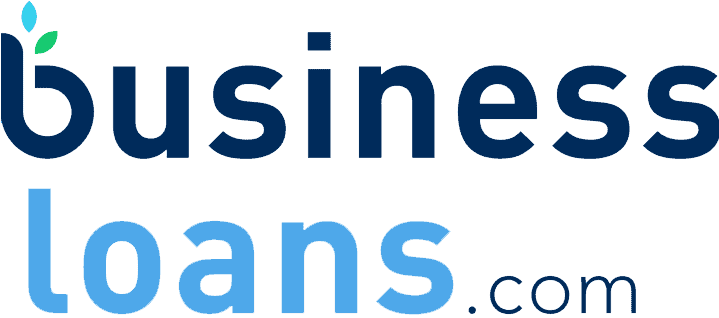Small business loans from banks may be difficult to qualify for, but businesses that meet the requirements are rewarded with low-cost, long-term funding.
Our content reflects the editorial opinions of our experts. While our site makes money through
referral partnerships, we only partner with companies that meet our standards for quality, as outlined in our independent
rating and scoring system.
If you’re a small business owner looking for long-term, low-interest loans, start your search for funding at your local bank. Although you may encounter strict requirements and longer processing and funding times, the tradeoff is affordable funding options that can be used to grow your business.
Keep reading to learn how to get a business loan from a bank.
What Is A Bank Small Business Loan?
A bank small business loan is a loan that a business owner receives from a bank. This can be a traditional loan that provides a lump sum of cash, or a more flexible option like a business line of credit.
Bank loans typically offer low rates and long repayment terms but may be more difficult to qualify for than other types of business funding.
How Bank Loans For Businesses Can Be Used
Bank loans for businesses can be used for business expenses, including:
- Acquiring a business
- Startup costs
- Purchasing commercial real estate or land
- Renovating a business
- Purchasing supplies, inventory, or equipment
- Hiring employees
- Refinancing existing business debt
- Working capital
During the application process, you will need to state the purpose of your business loan. Depending on lender policies and the type of loan, there may be some restrictions on how funds are spent.
Types Of Bank Loans For Businesses
Many banks offer several types of small business loans. Here are some of the most common types of bank loans for businesses.
Term Loans
A term loan (also known as an installment loan) is a traditional loan issued by a bank. The borrower receives a lump sum payment that is repaid — along with interest — each month over a set period of time.
A term loan is best for breaking down the cost of a large expense into more manageable payments.
Business Lines Of Credit
Instead of a lump sum, a line of credit gives you access to funds when you need them. Once approved, the bank will set a credit limit, allowing you to make multiple draws whenever you need cash to cover business expenses.
A line of credit is best for use as working capital and to cover emergency expenses.
SBA Loans
The Small Business Administration’s loan programs provide low-cost, long-term funding options for businesses. The SBA guarantees a portion of the loan, which can be obtained from a bank or other lender.
SBA loans are best for businesses that have a large expense (such as a real estate purchase) that can be paid off over time.
Equipment Loans
Equipment loans are used exclusively for purchasing equipment. These loans make it easier for businesses to buy expensive equipment that they can’t afford to purchase upfront.
Commercial Real Estate Loans
Commercial real estate loans are used to purchase commercial property. These loans are best for businesses that are opening a second or subsequent location, relocating from another building, or opening a brick-and-mortar business for the first time.
Eligibility Requirements For Bank Business Loans
While eligibility requirements vary by lender, type of loan, and other factors, there are a few general requirements to keep in mind before getting a bank loan for your business:
- Personal Credit Score: Banks will look at your personal credit score to determine if you qualify for a loan. If you do qualify, your score will be used to help determine your rates and terms. While score requirements vary, banks will typically want to see a score of 680 or higher before approving you for a loan.
- Personal Credit History: In addition to your personal credit score, recent defaults on loans, foreclosures, and bankruptcies may disqualify you from receiving a business loan. You should also be prepared to explain any negative credit items such as late payments, collections, or numerous inquiries.
- Business Credit Score: Some banks may also check your business credit score, which is based on factors like industry, company size, and payment history for business debt. Business credit scores range from 0 to 100, and the higher your score, the higher your odds for approval.
- Time In Business: Most bank loans require a business to be in operation for at least two years.
- Annual Revenue: A bank wants to make sure you have the income to repay the loan, so it will look at your annual revenue. While requirements vary by lender, most want to see a minimum of $100,000 in annual revenue.
- Industry: Your industry will also be considered when you apply for a bank loan. The bank will assess the risk of your business to determine if you qualify for funding. High-risk industries (such as gambling businesses or real estate investing) may not qualify for some types of bank loans.
Documentation Requirements For Bank Loans For Businesses
In addition to meeting the standard requirements for a business bank loan, you’ll also be expected to provide documentation during the application process. While your bank will provide you with specific documentation requirements, here’s a general idea of what you’ll need for a business bank loan:
- Driver’s license or other ID
- Business licenses & permits
- Articles of incorporation
- Business plan
- Loan proposal
- Resumes for all business owners
- Balance sheets, P&L statements, and other financial documentation
- Business & personal income tax returns
- Business & personal bank statements
- Future financial projections
Collateral Requirements For Bank Loans For Businesses
Collateral is typically required for certain types of bank loans, including larger loans. Collateral is business and/or personal assets that are used to secure the loan. If you default on the loan, the collateral can be seized and sold to repay the debt.
Even if specific collateral isn’t required, most loans require all owners to sign a personal guarantee (which makes you personally liable for the debt), or a blanket lien is attached to the loan, which gives the lender the right to seize all of your business assets to repay a loan that’s in default.
Some loans, such as equipment loans and commercial real estate loans, use the item being purchased as collateral to secure the loan.
Down Payment Requirements For Bank Loans For Businesses
A down payment may be required for your loan. Investing your own money into the loan shows the bank that you’re serious about repaying your debt.
Down payments vary but typically range from 10% to 30% of the borrowing amount.
How To Apply For A Business Loan From A Bank
Now that you know about business loans from banks, you should have a good idea of whether this is the right funding option for your business. Once you’ve made the decision to pursue a bank loan, you can apply by following these six steps.
Step 1: Determine If You Qualify For A Bank Loan
While you may need to shop around later on in the process to find the best rates and terms, you need to first determine if you meet the requirements for a bank loan for business.
Keep in mind that a bank will be looking for the following, at a minimum:
- Personal credit score & history
- Business credit score & history
- Business revenue & current debts
Before applying, pull your free credit report and score to see where you stand. Be prepared to explain any negative items on your report. If your credit isn’t where it needs to be, consider taking action to raise your credit score before applying for a bank loan.
Step 2: Choose Your Loan & Determine Borrowing Amount
Once you’ve determined that you may qualify for a loan, the next step is to narrow down your loan choices. First, decide how you plan to use loan proceeds. Making this decision will not only help you select the right loan but will also be required by your lender.
You will also need to decide how much you need to borrow. You can do this by getting quotes and estimates, lease agreements, and other information.
You’ll also need to calculate how much you can afford. Banks will use calculations like debt-to-income ratio (DTI) and debt service coverage ratio (DSCR) to determine loan eligibility, and you can use these same calculations to determine how much you can afford to borrow.
Step 3: Find A Bank That Issues Business Loans
Once you’ve determined how much you need (and can afford) and the best type of loan, you’ll need to find a bank that issues loans that fit this criteria.
You can first look at any bank that you already have accounts with, either business or personal. Check your bank’s loan options, rates, terms, fees, and eligibility requirements to determine if it’s the right bank for your small business loan.
If not, you can look at other banks in your area. Smaller community banks may have fewer borrowing requirements and fees but may only have lower borrowing limits or limited types of loans. Larger banks may offer more types of loans with higher borrowing limits but may have stricter requirements and additional fees.
You can also start your search with our picks for the best banks for small business loans.
Step 4: Complete Your Application
After choosing a bank, it’s time to complete your application. Many banks offer online applications. Other banks may require you to come into a branch.
When filling out your application, you’ll have to provide business and personal information, the borrowing amount, and the purpose of your loan. You’ll also need to provide documentation so that the bank can verify the information provided on the application, run your credit, calculate if you can afford the loan, and determine if you meet all borrower requirements.
Step 5: Keep In Contact With Your Lender
You can submit your application once it is complete and you have included all documentation. However, during the process, it is important to keep in touch with your lender. The bank may need additional documentation or information in order to process your loan. Make sure to respond to all phone calls, emails, and other communications promptly to keep your loan on track.
Step 6: Receive Funding From Your Bank
The time it takes to fully process and fund your bank loan application varies. A line of credit or smaller business loan may be approved in just a few weeks, while larger loans and SBA loans may take 30 to 90 days or longer.
Once processing and underwriting are complete, you’ll receive the funds in your bank account and can use them for their intended purpose.
 Chelsea Krause is a writer who specializes in accounting, payroll, and small business loans. She has been helping small business owners manage their finances since 2016. She is a QuickBooks Certified User and former eCommerce store owner. Her accounting expertise has been quoted in Forbes and her work appears in Startup Nation, Small Business Bonfire, and Women on Business. Chelsea graduated summa cum laude with a BA in English & Creative Writing from George Fox University and studied abroad at the University of Oxford as well.
Chelsea Krause is a writer who specializes in accounting, payroll, and small business loans. She has been helping small business owners manage their finances since 2016. She is a QuickBooks Certified User and former eCommerce store owner. Her accounting expertise has been quoted in Forbes and her work appears in Startup Nation, Small Business Bonfire, and Women on Business. Chelsea graduated summa cum laude with a BA in English & Creative Writing from George Fox University and studied abroad at the University of Oxford as well.If you’re looking for fast business funding, OnDeck is a good option. With OnDeck, a line of credit can be accessed almost instantly once your application is approved and term loans often have same-day funding.
Alternatives To Bank Business Loans
Business loans from banks aren’t the right choice for everyone. Whether you don’t meet requirements or you need fast funding, here are some alternatives to bank loans for businesses.
Microloans
A microloan is a small loan of $50,000 or less. These loans are often easier to qualify for and can be obtained from traditional financial institutions, as well as nonprofit organizations.
Crowdfunding
Crowdfunding provides businesses with capital through fundraising. Businesses can receive donations, offer up equity in their company, or provide investors with some type of reward in exchange for funding.
Alternative Lenders
Online alternative lenders can help businesses that don’t qualify for traditional funding get the capital they need. Many alternative lenders have fewer borrower requirements and can provide funds as quickly as the same business day. However, these loans often come with higher rates and shorter repayment terms than bank loans.
Installment loans, short-term loans, merchant cash advances, invoice financing, and business lines of credit are just a few of the options available through alternative lenders.
 Shannon has been writing for Merchant Maverick about small business software and financing since 2015. She started writing professionally about business topics in 2005. Shannon has been featured in the Washington Post, Reader's Digest, US News, MSN, Yahoo Finance, Business Insider, and other publications. She has a bachelor's degree in English from San Diego State University and currently resides in San Diego, California.
Shannon has been writing for Merchant Maverick about small business software and financing since 2015. She started writing professionally about business topics in 2005. Shannon has been featured in the Washington Post, Reader's Digest, US News, MSN, Yahoo Finance, Business Insider, and other publications. She has a bachelor's degree in English from San Diego State University and currently resides in San Diego, California.Check your credit report so you can see what a potential lender might see when running your credit. Before applying for loans, do what you can to improve your credit — for example, pay down your credit card balance or, if your spouse or a loved one has better credit than you, have them add you to their credit card as an authorized user.
The Bottom Line On Bank Loans For Business
If you meet the requirements and have the time to wait for approval and funding, you can’t go wrong with a business loan from a bank. Competitive rates and longer repayment terms make these loans a more affordable way to grow your business.
However, bank loans aren’t right for everyone. If you don’t qualify for funding or you want to explore other options, our guide on how to get a small business loan can help you every step of the way, from selecting your lender to submitting your application.


 Our expert reviewers found BusinessLoans.com to have a quick and easy application process alongside excellent support and guidance for borrowers.
Start A Quick Application
Our expert reviewers found BusinessLoans.com to have a quick and easy application process alongside excellent support and guidance for borrowers.
Start A Quick Application
 Our expert reviewers found BusinessLoans.com to have a quick and easy application process alongside excellent support and guidance for borrowers.
Start A Quick Application
Our expert reviewers found BusinessLoans.com to have a quick and easy application process alongside excellent support and guidance for borrowers.
Start A Quick Application